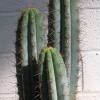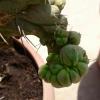-
Posts
5,462 -
Joined
-
Last visited
-
Days Won
39
mutant's Achievements
Newbie (1/14)
-
pretty clear they dont exactly like and support demonic plants around here... <___base_url___>/uploads/emoticons/default_smile.png I would love to be reading the info I am giving! probably some bad datura experience of everyone of the old sab crowd , typical with every early old hippy. I used to read datura reports in erowid and be amzed by the motive I saw in all experiences... amazing, just amazing how these medicinal plants got so involved in and around the evil the devil... and how idiots around the world were so eager to get stoned that they went through the datura delirium, sometimes is could go really bad... respect devil plants have to grow to understand.... mandragora belladona hyoscyamus datura UTD
-

Nitrogen´s Connoisseur hybrids - pics and seed giveaway
mutant replied to nitrogen's topic in Cacti & Succulents
taratatzum-tzum tzum! I said this somewhere, here it comes, only here and now seed givaway (nitrogen original seed) PM me europe prefered, US too no problem and anywhere as sending to oz is both formally illegal and thus risky (could make and exception or two though) its so nice having been here all these years thank you all I should and will give away these seed as a last(?) thank you I havent decided the creterion to which I should send and why, so you could improvise... in yr PMz you could as well write or think: ".... you cunt, you received them as a freebie , gifted with them, as an actual cactus grower, and actually didn't do anything with them !!! ...." well, you're right, only got a couple smallie ones.... from mostly one strain.... well thats why I am giving the rest of seed away, because this kind of seed should not be wasted on my hands and my lazy sowing style OK I got a rule (by which you write to me and I decide If you get seed ) : if there are 3 replies, and 1 is bold and enthousiastic and 2 are lukewarm the enthousiastic guy get all the seed... lukewarms get nuthing... people who are willing to further spread the seed / seedlings off it to other people will be definately prefered... extras like zelly's ariocarpus seed I never sowed and generic (?) lophophora seed should be expected for those who get the seed packs plus, I know I am cunt cunt is a word... hippies real word / life warriors will never be afraid of words, because human life was and is still based on words... -
yeah but are you asking about outside conditions, both here and in the island I first got it? island is zone 9 or zone 10 I am in zone 8+ zone 9 or something modern shaman> I think officinarium has a different (reverse?) cycle than automnalis and I expect it grow better in colder zones shonman I hope you are not trying with the wrong species I already told about the periods that plant acts but here's it once again CYCLE
-
havent noticed this on mine at all.. but mine are full sun year long alomst how long has it been grafted? have you seen real myrti-geometrizans spines? I still have two strains of it i assumed they're the same, but they could well not be.
-

a batch of kk is always a box of surprises
mutant replied to slice's question in Cactus & Succulent Identification
left ones seem bridgesioid -
sab turning up to be quite the cactus forum for IDs even! maybe it was called monstrosa because it seems indeed to be an "inermis" (spineless) form of some "proper" species..
-

Potting up plants...gradual pot sizes vs biggest pot
mutant replied to gtarman's topic in Ethnobotany
zelly, re>> lophos, I would say non caespitosas really like deep pots, so I would really recommend deep and narrow pots for the tap root of the real l. williamsi when seedling width is not really needed, but depth yeah, not unlike, say mandrake or other plants with fatty roots so like zelly said for a 5mm lopho you would like a 10-12 cm deep pot, with narrow margin and when it gets 2 cm, you put in in even deeper pot, narrow margin again. because for this cactus, its optimal for it to have the most depth to develop the carrot root same for other carrot root cacti -

Potting up plants...gradual pot sizes vs biggest pot
mutant replied to gtarman's topic in Ethnobotany
depends on many parameters, mainly in what you're growing and its root habits but also the type of pot (clay, plastic, how many holes etc) most of all, it all has to do with growing style trial and error following the "rules" or not make your own style! some times it even has to do with whether you want the plant to get really big, or you want to control its girth and growth gradually -
I would change sagi to "happy cunt" leo to "proud cunt" and aquarium to "confused and confusing cunt" other than that I like! cancer, I would also say "sensitive cunt"
-
#258, consider Psathyrella... #260 nice big agaricus dont know which you mean? the Gumnopilus?
-
potted a couple of the OZ cuzco-crest clone which seems be misspassing as a peruvian, lately, no need to do the mistakes the US scene did in the 90s also watered the newly rooted 2x bridgesii crests and 2x strange pachanoid/peruvian, also from oz .... I know I am a propagation freek, but I think that over propagation, especially from smaller cuttings is essential to knowing a monster phenotype - or maybe it gets you a certain knowledge, not allowing you to see how it would evolve, which is something I am trying to do (pachanoi crest is ideal for mealies and whatnot nests, especially in large plants, which are very curly and compress... ) and i hope I can see some flowers on crest/monsters pachanoi mother plants ... I dont entirely share the view of zelly for "trichocerei that go into the ground" - trichocerei can be very happy in pots too... for what its worth two more ozzie strains will be grown in my place... we will see if they are "peruvianus", even though its pretty obvious to be one of the strains is cuzcoid... I am thrilled, since i have been growing 2 strainsof pachanoi monster, one faster than the other, extensively - now I got 2 more tricho monster strains.....
-
is gaining reputation and popularity - doing more "lame" raps to my ears
-
3. shouldnt miss commenting on the mystic part of the thing and the habitat plants like Malverde said, this plant is magick, because magick is make believe and make believe around this plant still stand strong.. whatever tha case, its virtually impossible to uproot a whole plant from habitat.. older plants seem to go to impressive depths - I beheaded some 60 mandrakes from the habitat and in some way I am convinced I did a wonderful thing for them.. spreading the genes of that particular island everywhere! I would be proud if I were them mandrakes... plus there is a root that I recognize (its the one I dug the most , trying to get the largest chunk I could) and I remember it comes from a very important place of the island.... so important that admitting the actual location would be illigal, since its illegal to dig in archeological sites <___base_url___>/uploads/emoticons/default_tongue.png ...... especially when the site keeper encourages you to do it! (talking about a 12 cm fatty root, cutting, mind you , NOT something like you see in my home grows, which exceed 30 cm's in length note that I found more populations of mandrake around areas of historical importance, especially the oldest sites (unharmed by civilization areas ) , but there were also everywhere where the ecology said they would be: edge of the roads, olive groves , stony areas, stony paths, paths, archeological sites.... bingo! anyways there's still interest for the plant and root itself, let alone a live root... especially of the esoterist/mystic kind ..... some of these people wanna use the material as a symbol and not eat it, and some people sell them ginger instead of mandrake <___base_url___>/uploads/emoticons/default_tongue.png for what its worth, large Hyoscyamus plants, which are annual, do interesting looking , fatty rootlets which are considered as 'good' as mandrake root or Hyoscyamus flower, in terms of alkaloidal content. In that sense, and irregardless the legal status, growing mandrake to eat the root is equivalent to growing peyos to eat 'em - its stupid as you can get the trip from much cheaper, easier to grow , easier toget plants... moreover roots are very interesting yeah I got that from the begining, and its so funny I never expected to see man shaped root but I found a woman shaped root, and also a woman in a sexy pose for that matter !!! tbh I was a little surprised noone commented... a lady gaia , the archetypal woman in a root and noone freaks out.. I am amazed... I wonder If I should cut the thin roots to make a more proper photo session, before re-planting, or should I sell it for a ridiculous amount of money in ebay? I dont really get this mystic thing also, I dont know if its that I handled the roots while undigging and all (havent smoked tropane leaf for loooong time) or the new superpotent pot thats been circulating here , but I really had increased hard-ons lately... I think I will try to sell it... some 150 Uk pounds 200 euros would be an archievable sale... or should I got more? <___base_url___>/uploads/emoticons/default_blush.png but is this wrong? considering, the spirit inside is as close to the devil as no intoxicant plant .... tropane alkaloids in safe doses are social inhibitors, but in a different way than alcohol the combo, boy the combo of low dose alcohol and low dose tropane alkalods (smoked, for safetey) is really another dimention of social inhibation and inhibition in general.. still havent really experimented with this but I still consider Hyoscyamus my fave of the family , for a variety of reasons. But I admit that mandrake cultivation is extremely interesting and challenging , it proves! PS: some people are more prone to use alcohol, amanitas and tropane plants sensibly and we are sure to be a minority within the minority of the ethno-scene which is more around the classic psychedelics PS2: This is a thread about growing mandrake. DO NOT EAT any part of those plants as they are very toxic! (unless you know what you are doing which is another thing overall)
-
mandrake growing thread project This thread is packed with information in regards with growing mandrake. Its also a log to how mature Mandragora automnalis behaves in pots here . I will answer to you, but please also re-read the whole thread. In time I will probably write a more structured + improved experience log as I gain more experience. I have compiled and included in this thread's posts what I thought was the best info on the topic both in here, SAB, and in the www about growing mandrake. There are also some notes on starting from seed. Now, I have said this before, will repeat : the reason I am doing so great in just 2,5 years of growing them is that I started from roots I took from habitat. Root cuttings with rosettes, if you like... I did not start my plants from seed. I take pride on the fact I had this awesome idea and executed it.. I dont even think I killed any of the 60 plants I took the top of , of which 1/3 survived the transplant and first summer. I do have some casualtties each year, but the success in propagation via cutting has me optimistic. Plus I learn from mistakes. since then some 1000+ seeds have been sent all over the world, sold, gifted or traded and one root sold away (to oz, and it made it through, btw) these in the last two years. The ones I did start last year from seed I just threw them away on some pots and the tray... did not do anything.. fresh seed, thrown on soil in the right season for the northern hemishpere, which is around mid september more or less. Work wonders for me, since I got plenty of seed to spare. Now the ones in the tray I doubt they made it through summer (too shallow tray which I did not protect to a shadier place, so I am quite sure they dried out) , the ones that sprout in some deeper pots I tranplanted them eventually (they where very shocked by this) and a couple made it. now here are some of the main points of successful mandrake growing IME so far.. 0. the photoperiods of the plant the plant seems strongly photoperiodic (both words are greek by the way, phos, periodos) and it has periods it is inactive (OFF) and active (ON) ... Its the periods the plant is OFF that is the most sensitive to wrong handling by the grower. When the plant in ON, it seems to enjoy plenty of water. And you can judge by the rosette.... WHen the plant is invisible, then its more tricky. Unfortunately the plant can go OFF (inactive) more than one time, during the season, until it will finally rest in summer. Plant will go OFF each time the root reaches the bottom of the pot, reports say, and it seems to confirm. That is rosettes stop, and stop growing for some weeks. Later they re grow from the smae rosette or another rosette sprouts, and so on... It seems these short idle periods of the plant , when its OFF, inactive, are the ones, one should be careful and probably avoid watering. remember this can happen if the root hit the bottom of the plant. Thus, deep pots is very good idea. When the rosette is growing and fresh , though, it seems very easy plant... 1. keeping the root alive during the resting period (summer time, for north hemisphere) its obviously more difficult to do this with a 1 year old seedling , as this is a succulent plant in its behaviour and it stores girth, energy, water in its root complex. a smallish cutting or 1 year old seedling might dry out, bake during summer. Of course I am in zone 9 or something. Elsewhere, f.e. zone 6, you might have to watch it during the freezing period, which seems like a harder trick, since I dont know how it tolerates winter low temps.. Point is, the larger the root is , it seems, the hardest it is to make mistakes and kill it.. But that is not to say that a bigger root cannot be killed or damaged by wrong handling. I suspect the best practice is to stop watering the roots completely when the rosette (leaves) disappear around may, and place in a shady, relatively cool place for the summer. washing the roots in begining september allows the grower to check the root out, and place/plant in the optimum pot and positioning to ensure the best growth for the next season. So, a watering program following the plants needs seems essential.. no hasty waterings, no watering during summer or at the end of the season (end may) , especially when the rosette has finished its cycle and/or is not visible. Bad watering habits could result in death or damage in 3 different ways a) small root, too much heat, root dries out (partly or completely) b ) relatively frequent watering with little water could cause the upper part of the root to rot. It the soil doesn;t dry soon it might rot more root, or all of it. c) soaking watering in the wrong season , that is summer : it can kill a root completely, even a relatively biggish one... it can rot the bottom parts of the root, leaving some upper part alive.. all these are from experience, but since the root is underground, they are somewhat suggestive of what might be happening. 2,more things to consider even if you got a decent sized root or a decent cutting, you dont really know how deep to plant, unless you gain experience... and of course, as I am suspecting, root behaviour and form strongly depend on watering habits and zone. Unless the root starts forming a rosette BEFORE you plant it up again ( it happened last year when I uprooted laterin in mid septempber, and it hapenned this year in just one of the biggest roots), its more tricky to decide "how deep" but there are also new buds in the root (check out the pics, its the more whitish spots, pretty sure its new growth) indicant of root activity.... ENEMIES my mandrakes are attacked by ant-helped mealies... rosettes can hide a very strong colony of mealies, so note to self, next year, clean them up, as the stressing of the rosette should inferere strongly with the health of the root especially in the grow period. the soil is certainly something to consider... you should use a more free draining material in zone 6 than I do in zone 9... and still I have decided to plant them in a more freedraining material myself (more perlite, nothing fancy) myself.. 3. To sum up * deep pots * controlled waterings and schedule for the resting period, according to yr climate * watch out then the rosetter stops and gets in idle perios for couple weeks * protect the plant in winter (its an active period for it) since it comes from warm areas *maybe consider growing m.officinarium, as it is known to exist in mid europe countries which get freezing temps in winter *when a newbie - consider checking the root during the growing period, even though its sure gonna stress the plant
-
had to google homonculus.... nah I am all right with archetypical type big breasted woman roots I missed the joke of yr last post yep these bugger can grow big, even though I think I made several mistakes this last year in watering. so they are not as easy as I thought they were, but not nearly as difficutl as they say. I am begining to get convince that the root shape and its immense variety is linked with watering habits (rain habits) of a grow one root died, but most of them have become very beautiful and big indeed.









